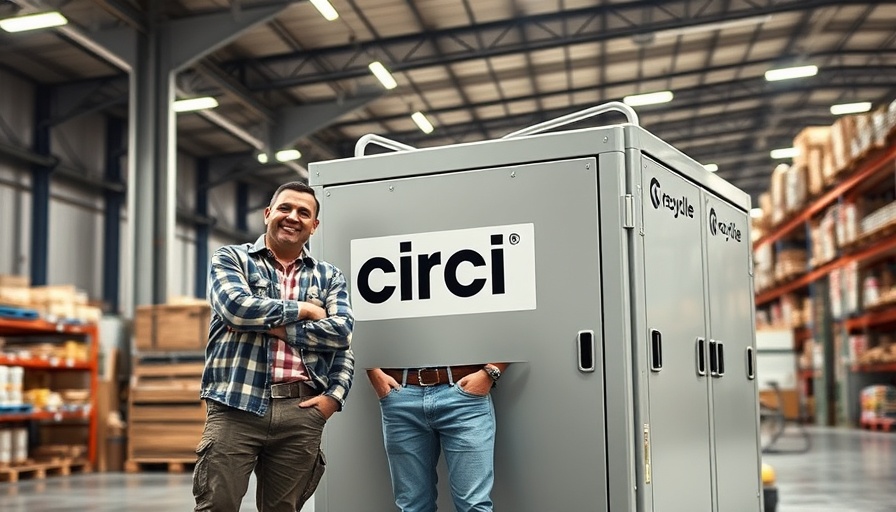
The Fashion Industry's Urgent Need for Sustainable Solutions
In recent years, the global fashion industry has come under increasing scrutiny due to its high environmental impact, primarily stemming from overproduction and waste. With only 15% of discarded clothing in the U.S. being reused or recycled, the textile waste crisis has become a pressing concern. Major cities struggle to deal with the sheer volume of textile waste, leading to overflowing landfills and rising emissions from discarded materials. The industry is now at a crossroads, needing to reimagine processes and innovate towards sustainability.
Circ's Innovative Approach: What's Behind the Technology?
Circ, a startup based in Danville, Virginia, is aiming to revolutionize textile recycling with a groundbreaking method that separates cotton and polyester fibers—a process that has traditionally led to either material being destroyed. Their innovative technology, described by COO Conor Hartman as a "fancy pressure cooker for textiles," delicately breaks down polyester while preserving cotton. This dual-fiber recovery process not only maximizes material reuse but also represents a significant leap towards sustainable fashion.
Investing in the Future: Circ's $500 Million Gamble
With a staggering investment of $500 million aimed at building a state-of-the-art recycling facility in Saint-Avold, France, Circ is poised to address the textile waste issue on a large scale. The facility is projected to process over 77,000 tons of fabric annually, transforming discarded clothing into valuable resources, and creating up to 200 jobs in the process. This ambitious project highlights the real potential for startups to make a difference in the battle against waste.
Global Expansion Plans: A Vision Beyond Borders
Circ's vision extends far beyond France. While European markets present favorable conditions for progressive companies, Hartman emphasizes that the need to tackle textile waste is not limited to one region. Circ's future plans include establishing facilities in other countries, including the U.S., as they aim to address a global challenge. Their comprehensive approach includes not just recycling technology but also a keen understanding of market dynamics, sustainability policies, and logistics.
The Role of Government and Policy in Sustainable Development
Choosing France for their facility was a strategic decision influenced by the country's supportive investment environment. The French government’s proactive stance on climate-friendly business initiatives made it an appealing location. In contrast, the recent U.S. policy shifts regarding clean technology have created more uncertainty for businesses looking to invest in sustainable solutions. Circ illustrates how entrepreneurial spirit can thrive even amid regulatory challenges; however, the success of such ventures will depend on collaborative governance.
Textile Waste: A Cultural and Economic Issue
As we grapple with the implications of fast fashion, the conversation must go beyond environmental metrics. Textile waste also represents cultural practices rooted in consumerism. Encouraging responsible consumption and sustainable practices within communities is essential to complement efforts like Circ's innovative facility. Educating consumers about the importance of sustainable choices can create a cultural shift that influences future demand.
Supporting Sustainable Innovations: How You Can Get Involved
As individuals, communities, and businesses, we hold power in driving the shift towards sustainability. Supporting companies like Circ through ethical consumerism, reducing waste, and engaging in local recycling initiatives can amplify their efforts. As awareness of the environmental crisis continues to grow, each of us has a role to play in fostering an ecosystem that values responsible consumption.
The Future of Fashion: Redefining Waste
Looking ahead, Circ's efforts underscore a pivotal moment in the fashion industry—a shift where textile waste is no longer seen as a burden but rather a resource waiting to be harnessed. By adopting innovative recycling methods and creating collaborative ecosystems, the potential for a more sustainable future in fashion becomes not just a possibility but an achievable reality.
 Add Row
Add Row  Add
Add 




Write A Comment